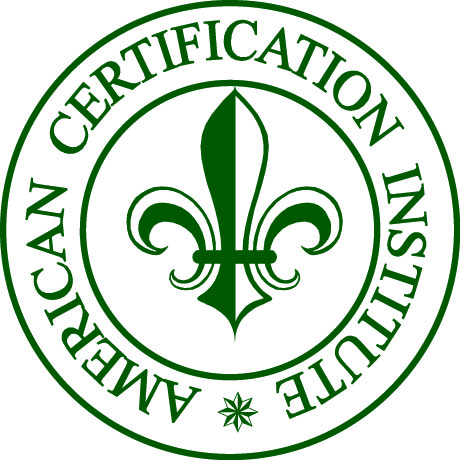
Accounting and Finance
CIFM- Certified International Finance Manager
- Overview
- Course Outline
- Association
Course Methodology
By enrolling in the Certified International Finance Manager training, you get to experience different modes of learning that include case studies, presentations, videos, and group exercises that will help you apply your learning in your professional life.
Course Objective
- To understand the higher aspects of Financial Management
- To improve the ability of participants to concentrate on critical financial aspects of business and make better management decisions
- To have a grasp of concepts that impact international businesses and financial systems
- To help participants understand managerial concepts and warning signs that could affect business
Target Audience
Business leaders and junior, middle or senior-level executives from any industry desiring to validate their accounting and finance knowledge make the best fit for the course.
Target Competencies
- Knowledge of Strategic vs. Tactical Financial Management
- Understanding Corporate Governance
- Break-even and SWOT analysis
- Perspectives of Balanced Scorecards
- Basics of business valuation
- Understanding of Corporate restructuring
- Understanding Risk Exposure
Course Outline
Module 1 – Main Components of Financial Management
- What is Financial Management
- Objectives of Financial Management
- Scope of Financial Management
- Strategic vs Tactical Financial Management
- Importance of Financial Management
- Three critical aspects of Financial Management
- Examples of Financial Management
Module 2 – Forms of Business Organization, Corporate Governance
- Types of Structures
- Sole Proprietorship
- Partnerships
- Private Limited Companies
- Public Limited Companies
- Advantages, Disadvantages and legal status of each of the above structures
- Definition of ‘Corporate Governance’
- What Corporate Governance aims to deliver
- Why Corporate Governance has become a hot topic
- What are the components of Corporate Governance
- Understanding the application of Corporate Governance in Organizations
- Key Corporate Actors
- Key responsibilities of each of them
- Board Structure & Composition
- Board Committees and their roles
- Recent cases of Corporate Governance failures and their implications
Module 3 – Break-Even Analysis, SWOT Analysis
- Break-Even Analysis
- What is break-even analysis?
- Benefits of a break-even analysis
- How to calculate the break-even point
- Break-even analysis examples: when to use it
- Break-even analysis limitations
- Tips to lower your break-even point
- SWOT Analysis
- What is a SWOT analysis?
- When and why should you do a SWOT analysis?
- SWOT analysis matrix
- How to do a SWOT analysis
- SWOT analysis exercise
- SWOT Analysis – Pros & Cons
Module 4– Balanced Scorecard
- What is Balanced Scorecard?
- Why called a Balanced Scorecard?
- 4 perspectives of Balanced Scorecard
- Strategy Map
- What are KPIs? Examples
- Types of KPIs
- Balanced Scorecard example
Module 5 – Valuations
- What Is a Business Valuation and its usage?
- The Basics of Business Valuation
- Some widely used Methods of Valuation
- Market Capitalization
- Times Revenue Method
- Earnings Multiplier
- Discounted Cash Flow (DCF) Method
- Book Value
- Liquidation Value
- Uses of Valuation
- In Portfolio Management
- In Acquisition Analysis
- In Corporate Finance
- For Legal and Tax Purposes
Module 6 – Mergers, Acquisitions & Re-Structuring
- What is meant by Corporate Restructuring
- M&A – Absorption vs Consolidation
- Types of M&A – Horizontal, Vertical and Conglomerate
- Reasons for M&A
- Acquiring a part business, say Plant
- What’s a Take Over?
- Compensation for the shareholders
Module 7 – Risk Management
- What is Risk Management? Why is it important?
- Risk Appetite vs. Tolerance
- Traditional vs. Enterprise Risk Management
- Understanding Risk Exposure and Calculating the value of risk exposure
- 5-step Risk Management Process
- 4-types of Risk Management Strategies
- Risk Heat Map
- Brief review of ISO 31000 and its 7-step process
- Some examples on how to avoid risk management failures
Module 8 – International Finance
- Foreign Exchange
- Forex Market or Foreign Exchange Market
- Major Participants in Forex Market
- Some Terms and Concepts related to
- Foreign Exchange Market
- Different types of transactions in the
- Foreign Exchange Market
- Merchant Rate and Exchange Margin in
- Foreign Exchange Markets
- Spot and Forward Foreign Exchange Rates
- The Major Risks in Foreign Exchange Dealings
- International Financial Markets
- Global Financial Markets
- Recent Developments in International Financial Markets
- Eurocurrency Market
- Eurocurrency Market Characteristics
- Eurobond
- Interest Rates
- Anti-Money Laundering Compliance
- What is Money Laundering
- Stages of Money Laundering
- Placement
- Layering
- Integration
- Terrorist Financing
- FATF
- CDD, AML, KYC, PEP
- Understanding International Financing Institutions
- IMF
- World Bank
- IBRD
 ACI, the American Certification Institute is one of the prominent accreditation bodies in the USA providing various international certifications for professionals across industries. The certification body also provides training, testing and certificate issuance to various relevant business-related courses.
ACI, the American Certification Institute is one of the prominent accreditation bodies in the USA providing various international certifications for professionals across industries. The certification body also provides training, testing and certificate issuance to various relevant business-related courses.
Blue Ocean Academy has an exclusive tie-up with ACI to offer the CIFM program in the UAE and other GCC countries. Upon course completion, students receive a Certificate from ACI.
- Overview
Course Methodology
By enrolling in the Certified International Finance Manager training, you get to experience different modes of learning that include case studies, presentations, videos, and group exercises that will help you apply your learning in your professional life.
Course Objective
- To understand the higher aspects of Financial Management
- To improve the ability of participants to concentrate on critical financial aspects of business and make better management decisions
- To have a grasp of concepts that impact international businesses and financial systems
- To help participants understand managerial concepts and warning signs that could affect business
Target Audience
Business leaders and junior, middle or senior-level executives from any industry desiring to validate their accounting and finance knowledge make the best fit for the course.
Target Competencies
- Knowledge of Strategic vs. Tactical Financial Management
- Understanding Corporate Governance
- Break-even and SWOT analysis
- Perspectives of Balanced Scorecards
- Basics of business valuation
- Understanding of Corporate restructuring
- Understanding Risk Exposure
- Course Outline
Course Outline
Module 1 – Main Components of Financial Management
- What is Financial Management
- Objectives of Financial Management
- Scope of Financial Management
- Strategic vs Tactical Financial Management
- Importance of Financial Management
- Three critical aspects of Financial Management
- Examples of Financial Management
Module 2 – Forms of Business Organization, Corporate Governance
- Types of Structures
- Sole Proprietorship
- Partnerships
- Private Limited Companies
- Public Limited Companies
- Advantages, Disadvantages and legal status of each of the above structures
- Definition of ‘Corporate Governance’
- What Corporate Governance aims to deliver
- Why Corporate Governance has become a hot topic
- What are the components of Corporate Governance
- Understanding the application of Corporate Governance in Organizations
- Key Corporate Actors
- Key responsibilities of each of them
- Board Structure & Composition
- Board Committees and their roles
- Recent cases of Corporate Governance failures and their implications
Module 3 – Break-Even Analysis, SWOT Analysis
- Break-Even Analysis
- What is break-even analysis?
- Benefits of a break-even analysis
- How to calculate the break-even point
- Break-even analysis examples: when to use it
- Break-even analysis limitations
- Tips to lower your break-even point
- SWOT Analysis
- What is a SWOT analysis?
- When and why should you do a SWOT analysis?
- SWOT analysis matrix
- How to do a SWOT analysis
- SWOT analysis exercise
- SWOT Analysis – Pros & Cons
Module 4– Balanced Scorecard
- What is Balanced Scorecard?
- Why called a Balanced Scorecard?
- 4 perspectives of Balanced Scorecard
- Strategy Map
- What are KPIs? Examples
- Types of KPIs
- Balanced Scorecard example
Module 5 – Valuations
- What Is a Business Valuation and its usage?
- The Basics of Business Valuation
- Some widely used Methods of Valuation
- Market Capitalization
- Times Revenue Method
- Earnings Multiplier
- Discounted Cash Flow (DCF) Method
- Book Value
- Liquidation Value
- Uses of Valuation
- In Portfolio Management
- In Acquisition Analysis
- In Corporate Finance
- For Legal and Tax Purposes
Module 6 – Mergers, Acquisitions & Re-Structuring
- What is meant by Corporate Restructuring
- M&A – Absorption vs Consolidation
- Types of M&A – Horizontal, Vertical and Conglomerate
- Reasons for M&A
- Acquiring a part business, say Plant
- What’s a Take Over?
- Compensation for the shareholders
Module 7 – Risk Management
- What is Risk Management? Why is it important?
- Risk Appetite vs. Tolerance
- Traditional vs. Enterprise Risk Management
- Understanding Risk Exposure and Calculating the value of risk exposure
- 5-step Risk Management Process
- 4-types of Risk Management Strategies
- Risk Heat Map
- Brief review of ISO 31000 and its 7-step process
- Some examples on how to avoid risk management failures
Module 8 – International Finance
- Foreign Exchange
- Forex Market or Foreign Exchange Market
- Major Participants in Forex Market
- Some Terms and Concepts related to
- Foreign Exchange Market
- Different types of transactions in the
- Foreign Exchange Market
- Merchant Rate and Exchange Margin in
- Foreign Exchange Markets
- Spot and Forward Foreign Exchange Rates
- The Major Risks in Foreign Exchange Dealings
- International Financial Markets
- Global Financial Markets
- Recent Developments in International Financial Markets
- Eurocurrency Market
- Eurocurrency Market Characteristics
- Eurobond
- Interest Rates
- Anti-Money Laundering Compliance
- What is Money Laundering
- Stages of Money Laundering
- Placement
- Layering
- Integration
- Terrorist Financing
- FATF
- CDD, AML, KYC, PEP
- Understanding International Financing Institutions
- IMF
- World Bank
- IBRD
- Association
 ACI, the American Certification Institute is one of the prominent accreditation bodies in the USA providing various international certifications for professionals across industries. The certification body also provides training, testing and certificate issuance to various relevant business-related courses.
ACI, the American Certification Institute is one of the prominent accreditation bodies in the USA providing various international certifications for professionals across industries. The certification body also provides training, testing and certificate issuance to various relevant business-related courses.
Blue Ocean Academy has an exclusive tie-up with ACI to offer the CIFM program in the UAE and other GCC countries. Upon course completion, students receive a Certificate from ACI.
